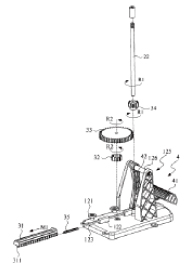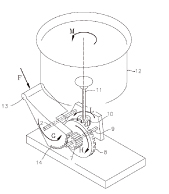The “innovative concept” of a utility model according to Italian law: ruling in Easy Wring case
Counterfeiting of a utility model cannot be excluded merely on the ground that a part of the protected mechanism differs, if the difference consists in an obvious technical alternative for obtaining the same effect: the District Court of Milan applies the doctrine of equivalents to Vileda’s “Easy Wring” products.
In its decision No. 10164 of 11 September 2015 the District Court of Milan interprets the doctrine of equivalents broadly in a case of utility model counterfeiting, and points out that there is counterfeiting also when a product’s shape differs from the one described in the utility model, if the product’s effect is the same and the differences are only a normal technical alternative for reaching the same result.
Facts in the case
Orlandi S.p.A. (Orlandi) is the licensee of the Italian utility model No. 269122, owned by Dikai International Enterprise Co. Ltd. (Dikai), concerning a bucket for mopping floors equipped with a rotating drum driven by a pedal, which wrings excess water from the mop’s strips of fabric.
Orlandi and Dikai brought proceedings before the District Court of Milan (the court) against the manufacturers of a bucket for mopping floors called “Easy Wring” (a recent version of the well-known “mocio Vileda”), also featuring a rotating drum with a pedal to be used to wring water from a mop with fabric strips.
The complainants claimed that the “Easy Wring” product infringed the utility model owned by Dikai.
The court ordered a technical expertise to assess both the validity of the utility model and whether the “Easy Wring” product infringed the model owner’s rights.
The expertise confirmed the validity of the utility model, and found that in the model the pedal was connected to a straight rod with cogs which transmitted the motion to other gears, that in turn transmitted the rotation to the internal drum; in the Easy Wring product the straight rod was missing, and the pedal, which had a curved, cogged side to it, connected directly with the gears to transmit the rotation to the internal drum (see figures).
 |
 |
| The utility model owned by Dikai | The mechanism used in the “Easy Wring” bucket |
The expertise ruled out counterfeiting, on the ground that the solution adopted by the “Easy Wring “ product did not infringe the rights in the model because it did not use the rack system – the straight cogged element transmitting the motion from the pedal to the other gears.
The expertise also excluded the applicability of counterfeiting “by equivalents” under Article 82 (3) of the Italian Industrial Property Code, which provides that “the effects of the utility model also extend to models that achieve the same effects, providing that they employ the same innovative concept”.
The court-appointed expert found that the utility model’s “innovative concept” lay in the application to the drum of a rack system to make it rotate, a solution that did not appear in any priority document.
Judgement of the court
The court considered the expertise’s interpretation of the “innovative concept” too narrow; the law’s reference to “the same innovative concept”, according to the court, implies that even different shapes can amount to infringement of the exclusive right if they achieve the same effect and are merely an obvious variation of the structure described in the model, embodying a normal technical alternative to reach the same result.
It must therefore be assessed whether the different conformation of part of the machine, producing the same final result, possesses an original character and offers a non-obvious solution that does not replicate the earlier one.
The court took the view that in the case at issue the replacement of the straight cogged rod with the pedal having a curved cogged side constituted an obvious alternative embodiment of the specific function of the rod element – to transform the rectilinear motion given by the pedal into rotatory motion – that a technician might easily obtain by using many combinations of cogged gears.
This difference on its own was not sufficient, according to the court, to avoid counterfeiting “by equivalents”.
The court therefore upheld the counterfeiting claim and ordered the defendants to withdraw from sale the “Easy Wring “ products, and to refrain from producing and marketing them. The order also set a fine for each product marketed in breach of the order and for each day of delay in complying with the order of withdrawal from sale.
30 October 2015
